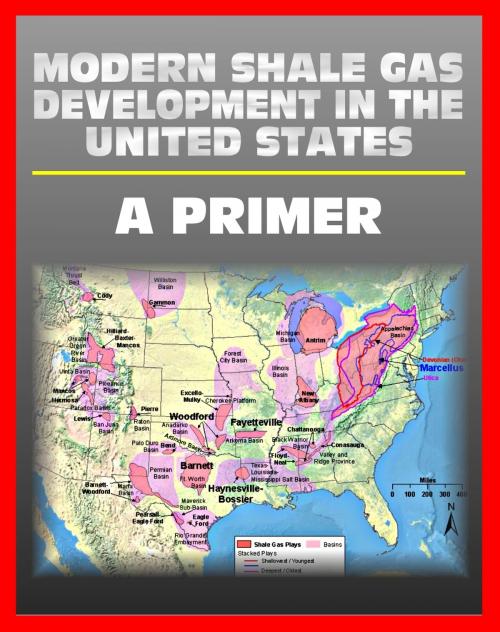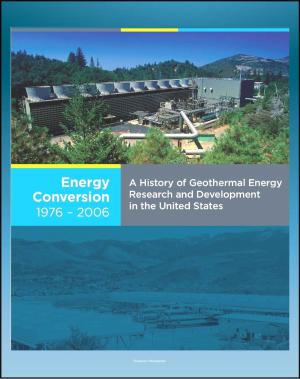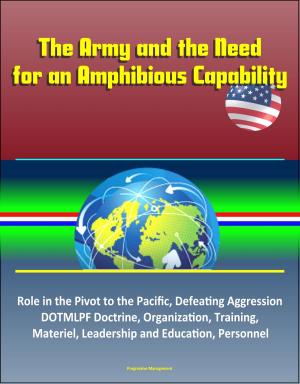Modern Shale Gas Development in the United States: A Primer - Geology, Regulations, Environmental Considerations, Hydraulic Fracturing, Protecting Groundwater, Pollution Threats, Impact to Land
Nonfiction, Science & Nature, Science, Biological Sciences, Ecology, Social & Cultural Studies, Political Science| Author: | Progressive Management | ISBN: | 9781458002334 |
| Publisher: | Progressive Management | Publication: | April 27, 2011 |
| Imprint: | Smashwords Edition | Language: | English |
| Author: | Progressive Management |
| ISBN: | 9781458002334 |
| Publisher: | Progressive Management |
| Publication: | April 27, 2011 |
| Imprint: | Smashwords Edition |
| Language: | English |
This up-to-date primer from the U.S. Department of Energy provides a comprehensive overview of shale gas production in the United States - including the use of hydraulic fracturing - and environmental protection issues, especially water resource management.
The primer states, "Water and energy are two of the most basic needs of society. Our use of each vital resource is reliant on and affects the availability of the other. Water is needed to produce energy and energy is necessary to make water available for use. As our population grows, the demands for both resources will only increase. Smart development of energy resources will identify, consider, and minimize potential impacts to water resources. Natural gas, particularly shale gas, is an abundant U.S. energy resource that will be vital to meeting future energy demand and to enabling the nation to transition to greater reliance on renewable energy sources. Shale gas development both requires significant amounts of water and is conducted in proximity to valuable surface and ground water. Hence, it is important to reconcile the concurrent and related demands for local and regional water resources, whether for drinking water, wildlife habitat, recreation, agriculture, industrial or other uses."
Contents: The Importance Of Shale Gas * The Role of Natural Gas in the United States’ Energy Portfolio * The Advantages of Natural Gas * Natural Gas Basics * Unconventional Gas * The Role of Shale Gas in Unconventional Gas * Looking Forward * Shale Gas Development In The United States * Shale Gas – Geology * Sources of Natural Gas Shale Gas in the United States * The Barnett Shale * The Fayetteville Shale * The Haynesville Shale * The Marcellus Shale * The Woodford Shale * The Antrim Shale * The New Albany Shale * Regulatory Framework * Federal Environmental Laws Governing Shale Gas Development * State Regulation * Local Regulation * Regulation of Impacts on Water Quality * Clean Water Act * Safe Drinking Water Act * Oil Pollution Act of 1990 – Spill Prevention Control and Countermeasure * State Regulations and Regional Cooperation * Regulation of Impacts on Air Quality * Clean Air Act * Air Quality Regulations * Air Permits * Regulation of Impacts to Land * Resource Conservation and Recovery Act (RCRA) * Endangered Species Act * State Endangered Species Protections * Oil and Gas Operations on Public Lands * Federal Lands * State Lands * Other Federal Laws and Requirements that Protect the Environment * Comprehensive Environmental Response, Compensation, and Liability Act * Emergency Planning and Community Right-to-Know Act * Occupational Safety and Health Act * Environmental Considerations * Horizontal Wells * Reducing Surface Disturbance * Reducing Wildlife Impacts * Reducing Community Impacts * Protecting Groundwater: Casing and Cementing Programs * Hydraulic Fracturing * Fracture Design * Fracturing Process * Fracturing Fluids and Additives * Water Availability * Water Management * Naturally Occurring Radioactive Material (NORM) * Air Quality * Sources of Air Emissions * Composition of Air Emissions * Technological Controls and Practices * Summary * Acronyms and Abbreviations * Definitions
This is a privately authored news service and educational publication of Progressive Management. Our publications synthesize official government information with original material - they are not produced by the federal government. They are designed to provide a convenient user-friendly reference work to uniformly present authoritative knowledge that can be rapidly read, reviewed or searched. Our e-books put knowledge at your fingertips, and an expert in your pocket!
This up-to-date primer from the U.S. Department of Energy provides a comprehensive overview of shale gas production in the United States - including the use of hydraulic fracturing - and environmental protection issues, especially water resource management.
The primer states, "Water and energy are two of the most basic needs of society. Our use of each vital resource is reliant on and affects the availability of the other. Water is needed to produce energy and energy is necessary to make water available for use. As our population grows, the demands for both resources will only increase. Smart development of energy resources will identify, consider, and minimize potential impacts to water resources. Natural gas, particularly shale gas, is an abundant U.S. energy resource that will be vital to meeting future energy demand and to enabling the nation to transition to greater reliance on renewable energy sources. Shale gas development both requires significant amounts of water and is conducted in proximity to valuable surface and ground water. Hence, it is important to reconcile the concurrent and related demands for local and regional water resources, whether for drinking water, wildlife habitat, recreation, agriculture, industrial or other uses."
Contents: The Importance Of Shale Gas * The Role of Natural Gas in the United States’ Energy Portfolio * The Advantages of Natural Gas * Natural Gas Basics * Unconventional Gas * The Role of Shale Gas in Unconventional Gas * Looking Forward * Shale Gas Development In The United States * Shale Gas – Geology * Sources of Natural Gas Shale Gas in the United States * The Barnett Shale * The Fayetteville Shale * The Haynesville Shale * The Marcellus Shale * The Woodford Shale * The Antrim Shale * The New Albany Shale * Regulatory Framework * Federal Environmental Laws Governing Shale Gas Development * State Regulation * Local Regulation * Regulation of Impacts on Water Quality * Clean Water Act * Safe Drinking Water Act * Oil Pollution Act of 1990 – Spill Prevention Control and Countermeasure * State Regulations and Regional Cooperation * Regulation of Impacts on Air Quality * Clean Air Act * Air Quality Regulations * Air Permits * Regulation of Impacts to Land * Resource Conservation and Recovery Act (RCRA) * Endangered Species Act * State Endangered Species Protections * Oil and Gas Operations on Public Lands * Federal Lands * State Lands * Other Federal Laws and Requirements that Protect the Environment * Comprehensive Environmental Response, Compensation, and Liability Act * Emergency Planning and Community Right-to-Know Act * Occupational Safety and Health Act * Environmental Considerations * Horizontal Wells * Reducing Surface Disturbance * Reducing Wildlife Impacts * Reducing Community Impacts * Protecting Groundwater: Casing and Cementing Programs * Hydraulic Fracturing * Fracture Design * Fracturing Process * Fracturing Fluids and Additives * Water Availability * Water Management * Naturally Occurring Radioactive Material (NORM) * Air Quality * Sources of Air Emissions * Composition of Air Emissions * Technological Controls and Practices * Summary * Acronyms and Abbreviations * Definitions
This is a privately authored news service and educational publication of Progressive Management. Our publications synthesize official government information with original material - they are not produced by the federal government. They are designed to provide a convenient user-friendly reference work to uniformly present authoritative knowledge that can be rapidly read, reviewed or searched. Our e-books put knowledge at your fingertips, and an expert in your pocket!















